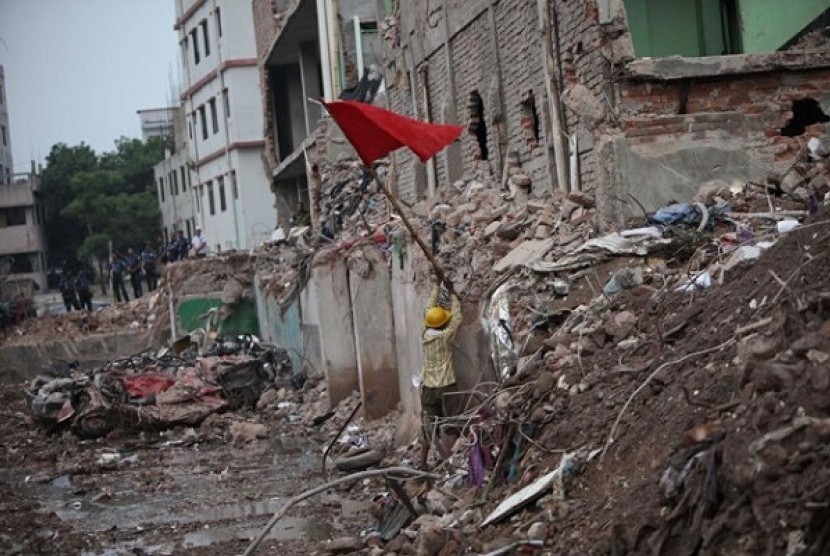REPUBLIKA.CO.ID, SAVAR - Nearly three weeks after a Bangladesh garment-factory building collapsed, the search for the dead ended Monday at the site of the worst disaster in the history of the global garment industry. The death toll: 1,127.
The collapse of the Rana Plaza building focused worldwide attention on the hazardous conditions in Bangladesh's low-cost garment industry and strengthened pressure for reforms.
On Monday, the government said it will begin allowing garment workers to form trade unions without permission from factory owners. Swedish retailing giant H&M and Britain's Primark Stores also announced they have accepted a safety plan drawn up by labor groups that requires retailers to help pay for factory improvements.
Mohammed Amir Hossain Mazumder, deputy director of fire service and civil defense, told The Associated Press the search for bodies from the April 24 collapse was called off at 6 pm. "Now the site will be handed over to police for protection. There will be no more activities from the fire service or army," he said.
Bulldozers and other vehicles have been removed from the building site, which will be fenced with bamboo sticks. Red flags were erected around the site to bar entry.
The last body was found on Sunday night. A special prayer service will be held Tuesday to honor the dead, said army Brig Gen Mohammad Siddiqul Alam Shikder.
For more than 19 days, the collapsed Rana Plaza in the Dhaka suburb of Savar had been the scene of frantic rescue efforts, anguished families and the overwhelming smell of decaying flesh.
Miracles were few, but on Friday, search teams found Reshma Begum, a seamstress who survived under the rubble for 17 days on cookies and bottled water.


